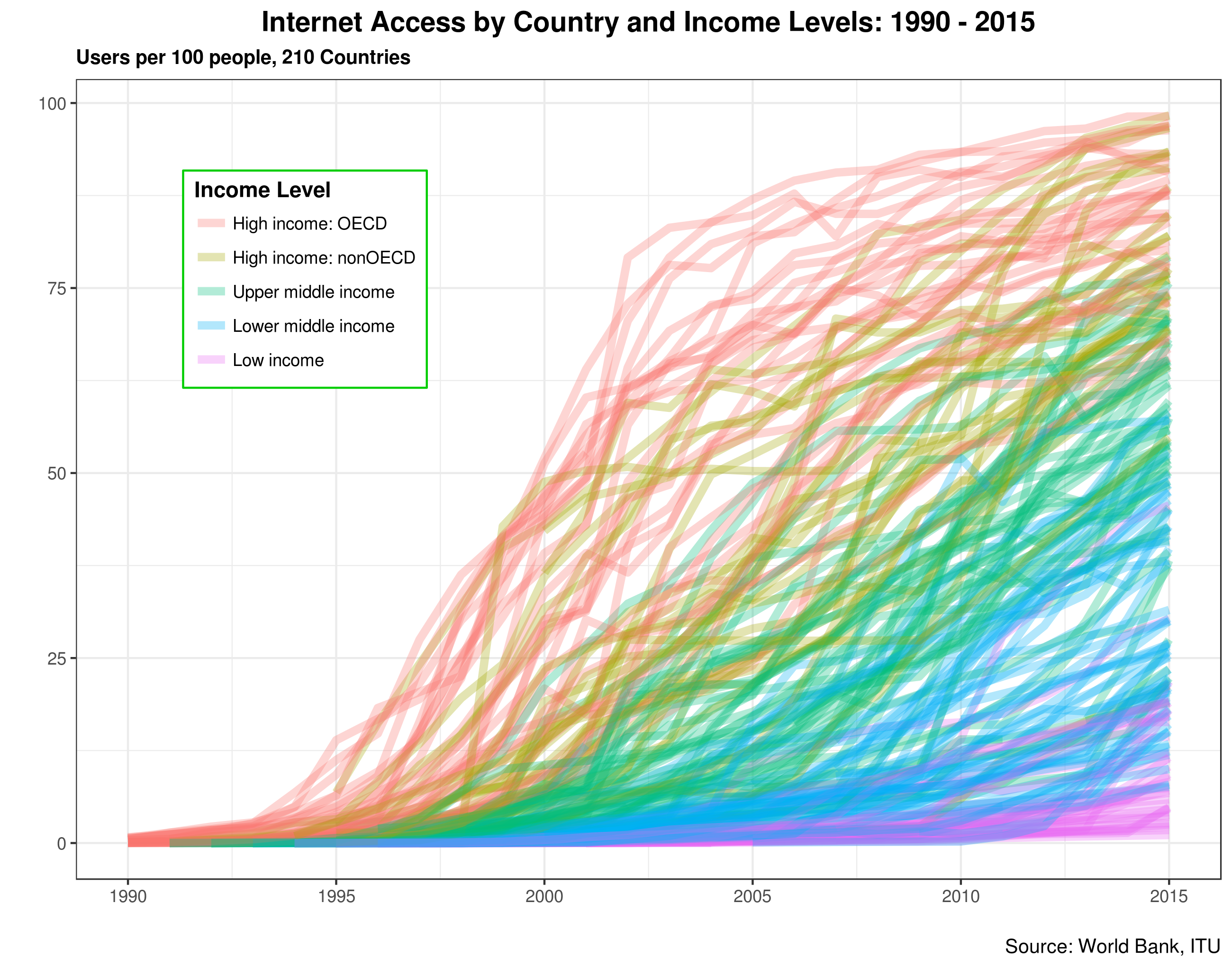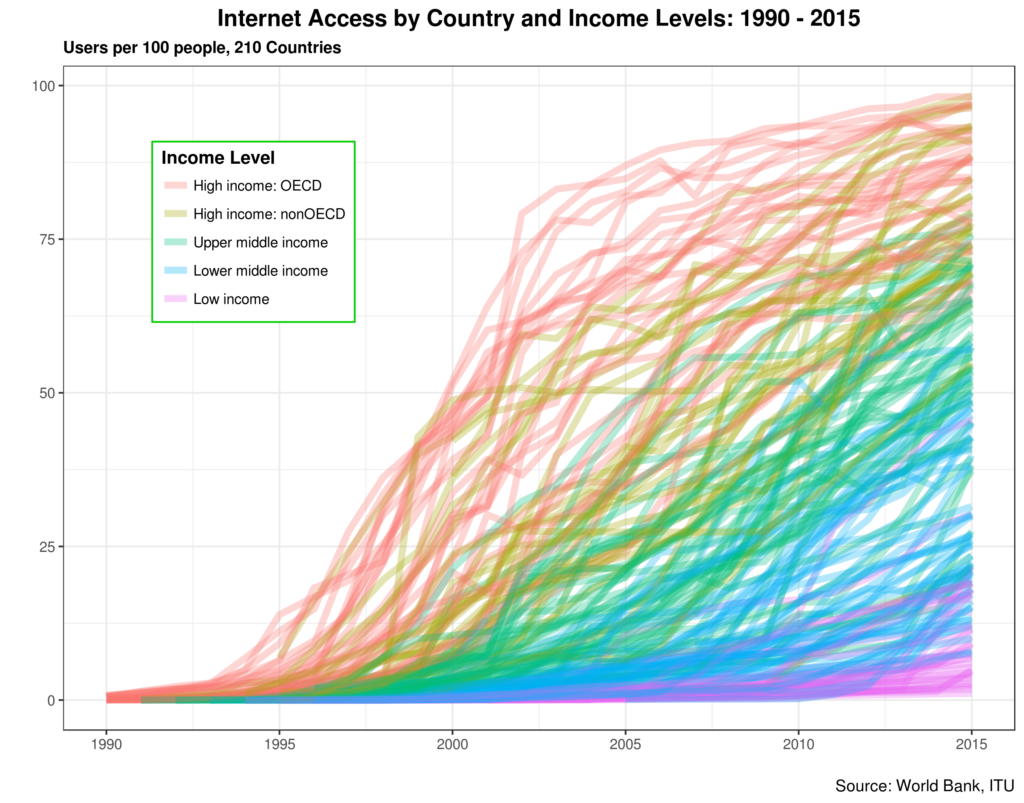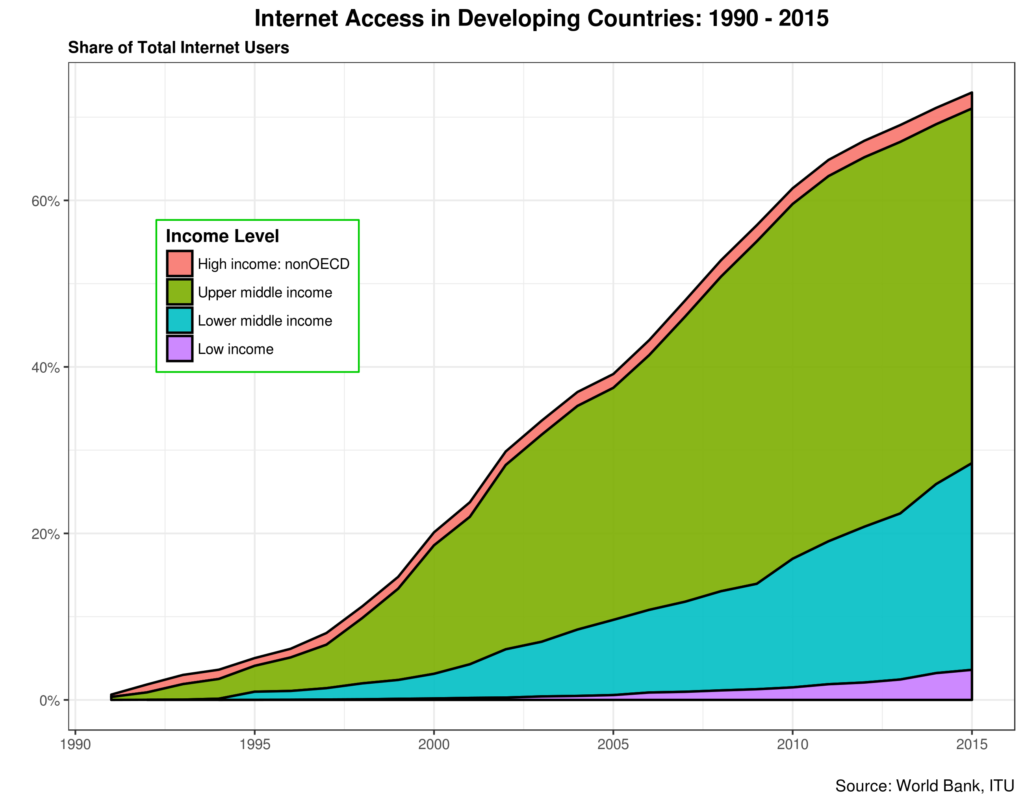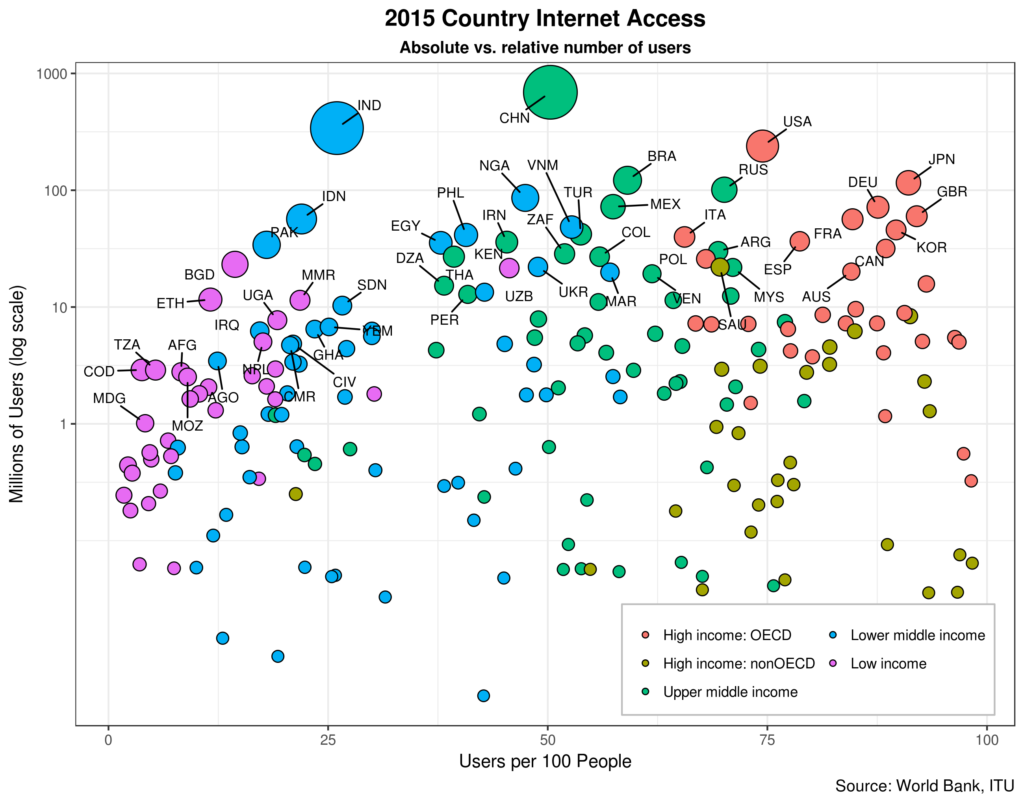No doubt Internet access has come a long way in the last 25 years. The latest estimates for 2016 show that 3.45 billion people have access to the Internet. That is 47% of the world’s population. The flip side of this number is perhaps more revealing: more than half of the world is not connected to the network. Bear in mind these statistics measure Internet access from home thus excluding those who log in from public access sites such as libraries and CyberCafes, for example. It is possible that these numbers underestimate actual usage. But as long as such underestimation is consistent over time, we can safely use the data to do some analysis,
In this post, I will look at Internet access by country1 Note that 2016 data by country is not yet available. and by income levels as defined by the World Bank. Income level categories evolve as countries are expected to move up over time. The data uses the current income level assigned to each country ignoring past level changes.
Figure 1 offers an “impressionistic” view of the evolution of Internet access for 210 countries and territories. At least three clear patterns can be detected. First,
a close correlation between country income level and Internet access regarding diffusion speed. High-income OECD countries, or industrialized countries (ICs), were not only the first ones to gain access but also the fastest in reaching over 50 percent penetration with a few exceptions. Low-income countries (LICs) are still struggling to go above the 25 percent threshold. Second, the spread of diffusion within each income level category is palpable, especially for high-income countries. The diffusion gap is not as wide for LICs – due perhaps to the fact that Internet diffusion is just starting. And third, lower middle-income countries (LMICs) and LICs have been active players since the late 1990s, but yet to reach significant levels of Internet users. Not surprising as this set of countries face multiple challenges ranging from pervasive poverty to lack of human and institutional capacity.
FIgure 2 shows the evolution of Internet access for developing and emerging countries.
Figure 2
By 2015, over 71 percent of all Internet users (roughly 2.3 billion people) were in a developing country.2 Removing high-income non-OECD countries has little effect as the population in this group of countries is about 1 percent of the world’s total. But this group of countries represents over 85 percent of the total 2015 global population. Note also that upper middle-income countries (UMICs) have the largest share of 42.6 percent of total users, China taking almost half of such share. LMICs come in third with 24.8 percent, preceded by ICs who make nearly 27 percent. India, classified as LMIC, accounts for 43 percent of such share. LICs are minor players reporting a share of just 3.6 percent.
The figure below sheds further light on the above. It correlates absolute and relative number of Internet users by country. Bubble or point sizes represent the
country’s total population. Countries with populations of at least 3% of the world’s total are highlighted. China has close to 700 thousand users, the most in the world, but only 50% Internet penetration. India, who nowadays leads in Internet access annual growth rates, comes in second but has a diffusion below 30 percent. No LICs and a few selected LMICs report 50 percent Internet penetration. Concerning the latter, Morocco and Vietnam have already crossed such threshold with Ukraine and Nigeria running close behind. Most LICs are having trouble crossing the 20 percent threshold.
All of the above suggests a strong link between Internet access and human development. Connecting the next billion people to the Internet will be much complex as they happen to live in countries where socio-economic, political and even cultural barriers are formidable. Taking a technical or infrastructure approach will not suffice. What is needed is to build stronger links with international development goals such as the UN Sustainable Development Goals (SDGs), national development agendas and local development strategies and plans.
The Internet alone will not solve all these barriers. But it could be one of the key catalysts to help move forward the human development agenda.
Cheers, Raúl





Comments
One response to “Evolution of Global Internet Access – 1990 – 2015”